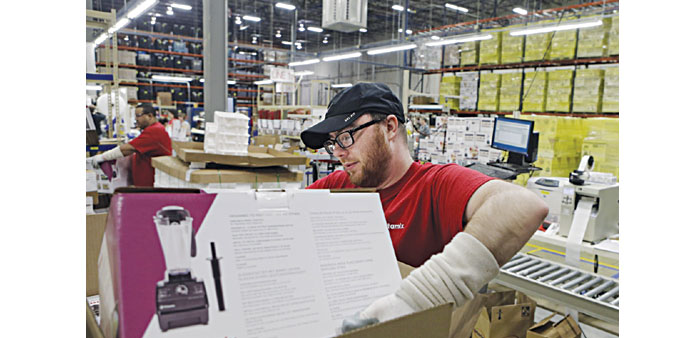Durable goods inventories rose 0.4%. That supports views inventories would be a boost to Q2 growth
Reuters/Washington
A mixed reading on the health of US business investment has suggested the economy may not have rebounded as strongly in the second quarter as previously believed, but it offered hope for the rest of 2014.
Non-defence capital goods orders excluding aircraft, a closely watched proxy for business spending plans, rebounded 1.4% after declining by a downwardly revised 1.2% the prior month, the Commerce Department said.
However, shipments of these so-called core capital goods fell 1.0%. Core capital goods shipments are used to calculate equipment spending in the government’s gross domestic product measurement.
It was the third month of decline in shipments, prompting some economists to temper their second-quarter growth estimates.
“The weak performance in core capital goods shipments during the quarter suggests that this segment of the economy is unlikely to contribute much to economic activity,” said Millan Mulraine, deputy chief economist at TD Securities in New York.
Morgan Stanley trimmed its second-quarter growth estimate by one-tenth of percentage point to a 3.2% annual rate, while JPMorgan lowered its forecast to 2.6% from 2.7%.
The government will release its first snapshot of second-quarter GDP next Wednesday. The economy contracted at a 2.9% rate in the first three months of the year, with business spending on equipment falling at a 2.8% rate.
But the swing back in core capital goods orders last month offered hope for growth in the third quarter. That trend, if sustained would be a boost to growth.
In addition, unfilled core capital goods orders increased a solid 1.2% after rising 0.5% in May.
“The momentum in core orders in the second quarter bodes well for equipment and software spending in the second half of the year,” said Michael Gapen, a senior economist at Barclays in New York.
Some economists, however, worry that business investment might not pick up much because of the sharp downward revision to May’s core capital goods orders from the previously reported 0.7% increase.
“The weakness late in the quarter implies a soft trajectory for capital spending heading into the third quarter,” said Michael Feroli, an economist at JPMorgan in New York.
“All in all, it’s nice to see that capital expenditure has rebounded from its first-quarter hole, but the latest data do nothing to indicate that capital spending is about to shift into higher gear.”
Other details of the report painted a fairly upbeat picture of manufacturing, consistent with other data on factory activity. Orders for long-lasting manufactured goods increased 0.7% in June as demand increased from transportation to machinery and computers and electronic products.
The increase in orders for these goods, which range from toasters to aircraft that are meant to last three years or more, followed a 1.0% drop in May.
Unfilled orders for durable goods rose 0.8% last month after rising 0.7% in May, showing a building up of backlogs that will keep the nation’s factories busy for a while.
Durable goods inventories rose 0.4%. That supports views inventories would be a boost to second-quarter growth. A slow pace of inventory accumulation was behind the sharp contraction in output in the first quarter.
“It is further encouragement that the economy will return to growth in the second quarter and should continue to be strong through the remainder of 2014,” said Tim Quinlan, an economist at Wells Fargo Securities in Charlotte, North Carolina.



